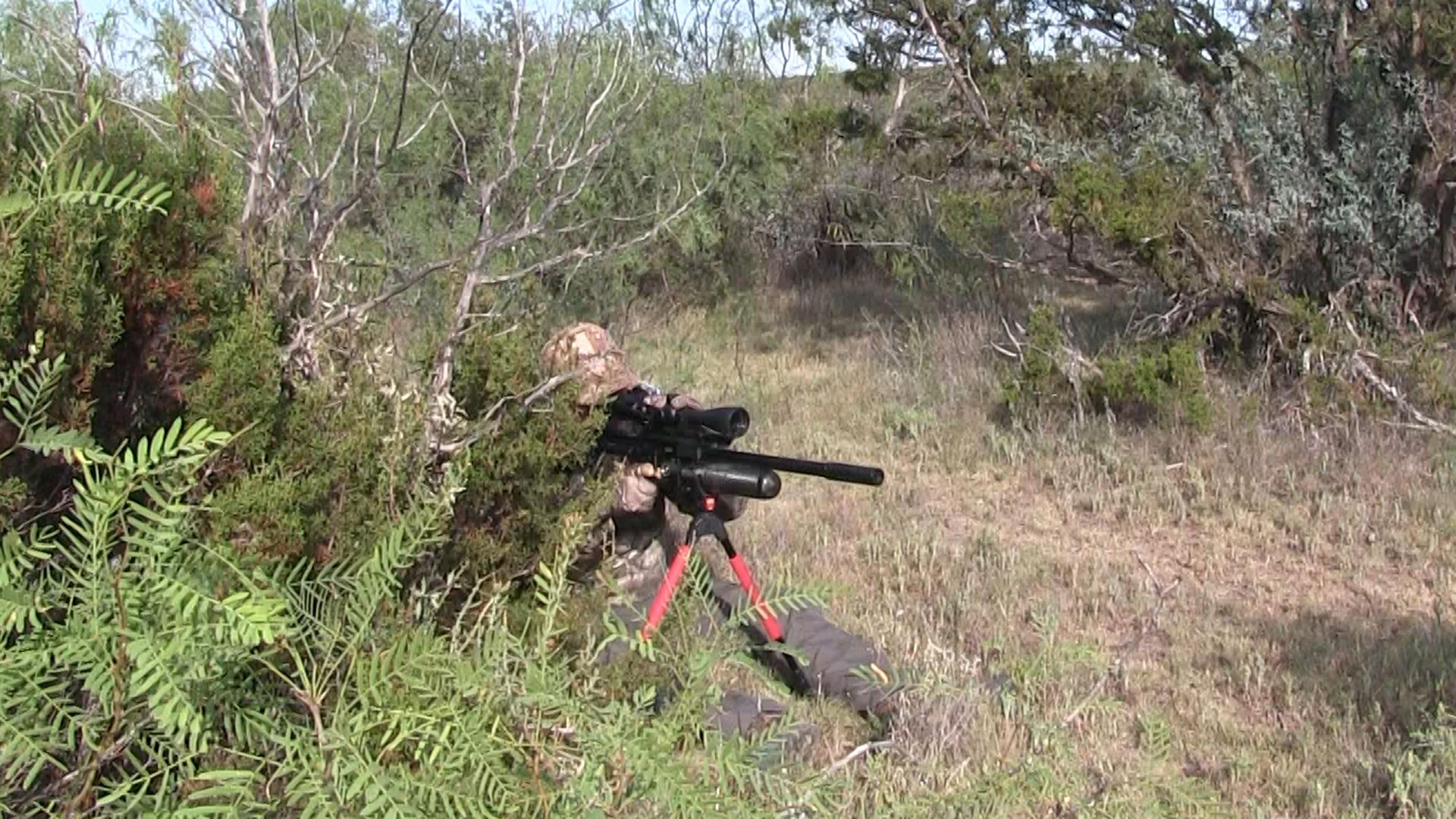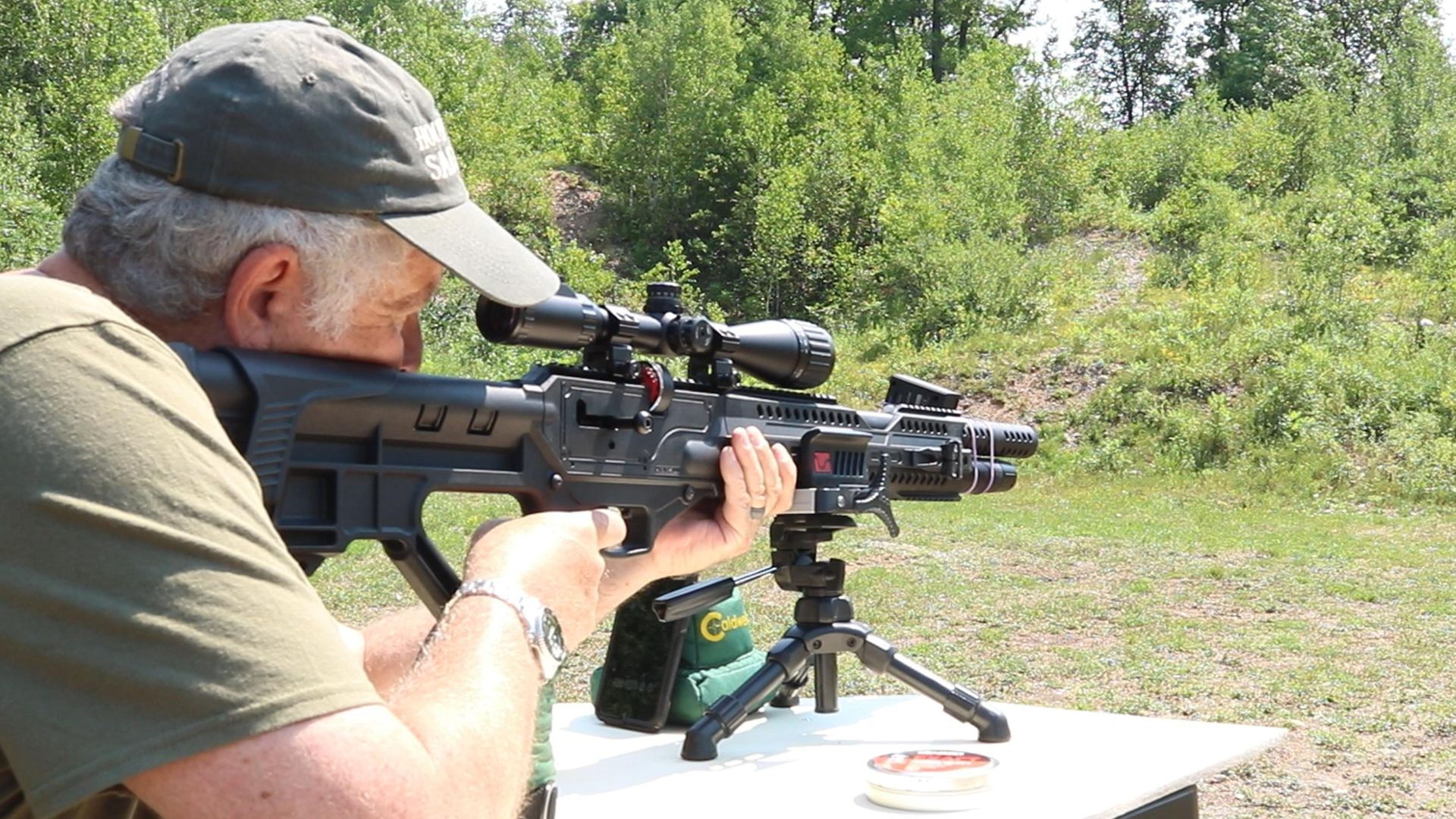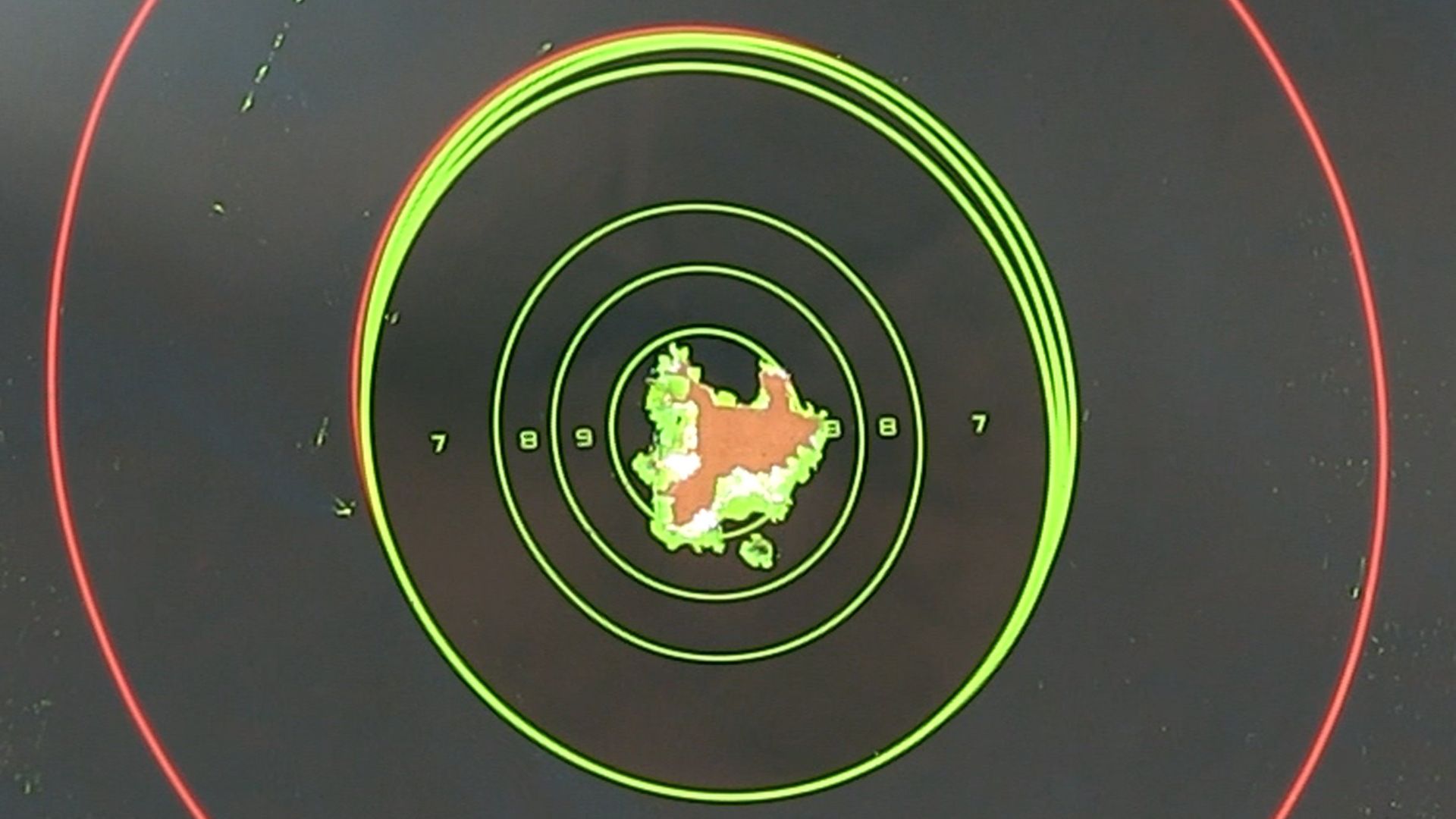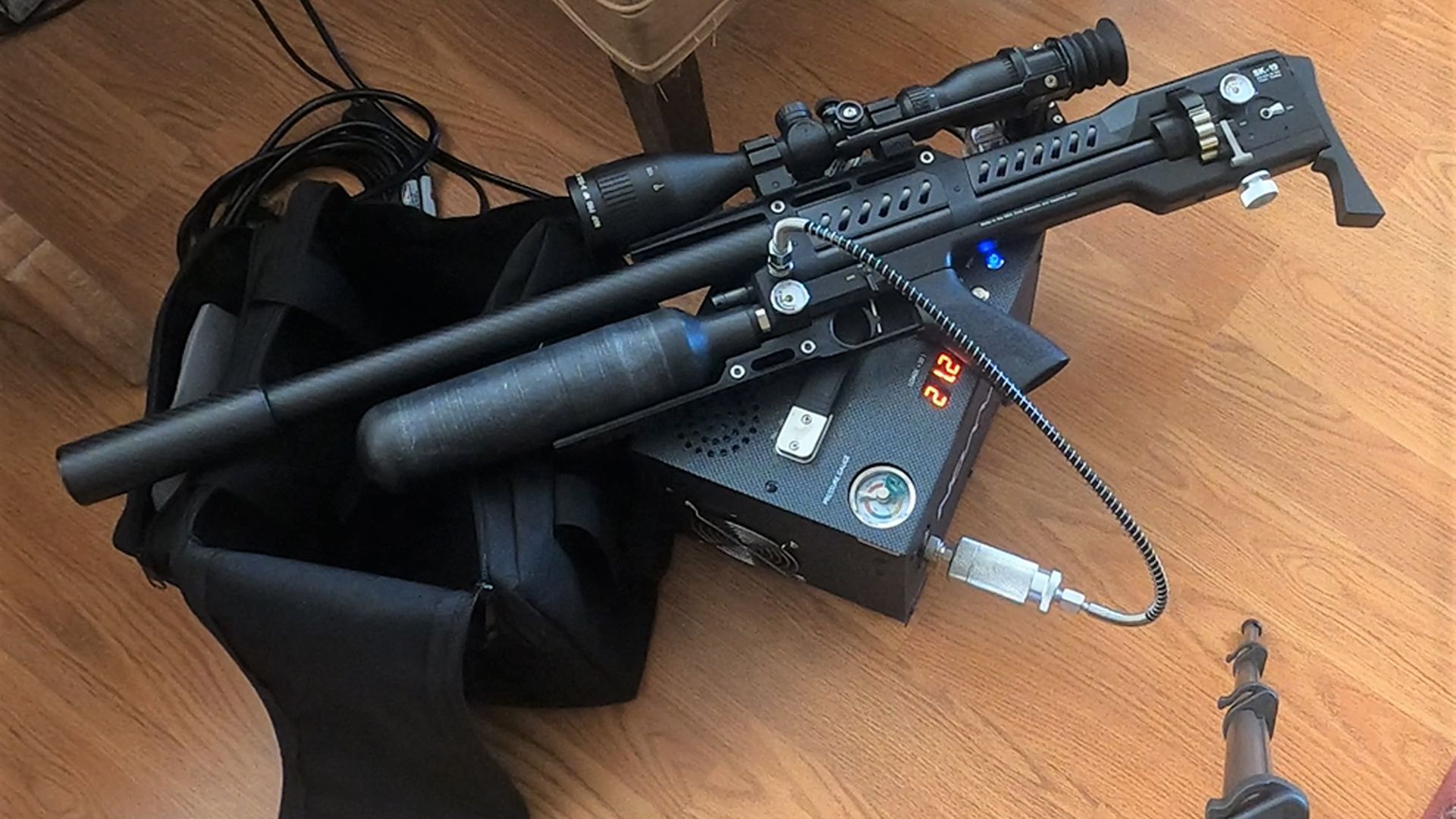Jim Chapman explores the subject of hunting with semi-automatic air rifles, and questions whether semi-autos have a place in the hunting field...
Over the last couple of years, I’ve had a chance to test a few semi-automatic PCP air rifles, and these testing sessions have included both range work and going out in the field to hunt. After publishing videos and articles on earlier semi-auto (SA) guns, mail started to flow from those who like the idea of a semi-auto, and those who think there is no place for them when hunting. In this article, we’ll take a look at a few of the semi-autos I’ve used, then discuss their utility for field work.
The first semi-auto air rifles that I had experience with were the electro-mechanical actuated guns that came to the market several years ago. These guns functioned OK, but were hard to shoot accurately due to a lag between the trigger pull and discharge of the rifle. Invariably, I found that there was a lot of slop in the trigger, which compromised accuracy when rapid-firing in SA mode, and to make the issue even more problematic, this lag worsens in cold weather, limiting their usefulness up in the frozen north where I live.
The last time I used a gun of this design for hunting, I had called in a large coyote that ran right up to the call and froze. I was on sticks and slowly swept the cross hairs to the ‘yote’s head. then squeezed the trigger. The mechanism clicked, and by the time the .35 calibre pellet had been launched, my quarry had turned and was bolting away. I decided that was it, until the technology improved.
 credit: Archant
credit: Archant
Blow-back actions improve reliability
A little later I was sent another SA-action rifle that was based on a blow-back mechanism. This rifle was very accurate and a pleasure to shoot, but it had two flaws; one I could live with and one I could not. The lesser of the two shortcomings was that the rifle was very ammo sensitive, but the fatal flaw was the gun’s unreliability. It jammed frequently and was prone to blowing ‘O’ rings, and failed every time I hunted with it.
Suffice to say, these experiences left me with something of an anti-SA bias that has coloured my opinion of these guns, but recently, I’ve had the opportunity to work with three new rifles that also use the blow-back mechanism for their SA actions. The manufacturers promised me that the actions worked to specification and were reliable, so I decided to give them a fair go. The three guns I’ve been shooting are; the LCS Air Arms SK 19 in .25 calibre, the Hatsan Invader .22, and the AEA HP SA Carbine in .30.
As mentioned, these three guns use some manner of a blow-back mechanism, in which the rifle cycles and comes back into battery by using the residual air from the firing cycle to cycle the bolt mechanically. There is a gas port in the barrel that directs air to compress a piston at the top of the barrel, which then expands back driven by a spring behind it. The piston is connected to the action via a linkage that cycles the action.
Each of these guns has some version of this mechanism, which is paired with a spring-operated magazine. It is necessary for the SA action and the magazine to work in unison to achieve the level of reliability necessary for a field gun. If the gun is regulated, it theoretically has the potential to improve reliability and allow the gun to be optimised for a wider range of pellet designs and weights.
The expected improvement of the blow-back design over the electro-mechanical mechanism is improved reliability, and since there is no associated trigger lag in blow-back actuated rifles, more consistent and accurate shooting is achieved.
 credit: Archant
credit: Archant
Hunting semi-autos on the market
The LCS Air Arms SK-19 is a powerful semi/full automatic PCP air rifle available in .25 or .30 calibre. The .30 that I am shooting uses a 17-pellet magazine which is fixed, and is loaded by lifting a magnetic cover on the right side. The rifle is regulated and there are two integrated pressure gauges; one for monitoring fill pressure, and one to monitor the regulator pressure setting. The muzzle velocity on the SK-19 can be adjusted with a wheel under the magazine, and there is a great deal of latitude when dialling in the power. The LCS Air Arms SK-19 is ‘select fire’ and allows the operator to put the gun in a safe condition, or you can shoot semi-auto or full- auto.
My experience with the LCS SK19 was that the accuracy was quite good, and I could keep a full magazine of pellets inside the kill zone of a rabbit at 50 yards, rapid-firing off sticks. The guns configuration also made it a good shooter for me off-hand, and several times when hunting small game, I have been able to bag multiple prey by shooting quick second and even third shots off-hand.
The Hatsan Invader comes in .177, .22, and .25, and my rifle is a .22 calibre. In this configuration, the ammo is cycled through a 12-shot magazine, and the gun generates approximately 50 shots at 30fpe. Like most Hatsan rifles, the Invader is a handful at 40.5” LOA using a 19.7” barrel, and weighing in at a bit over 8lbs. Even though it’s on the larger side, I find the synthetic stock ergonomic, and I do like all of the accessory rails for mounting lights, bipods, etc. There is a handy recess under the stock for carrying additional magazines, and integrated sling mounts that are quite handy. On my rifle, I have detached the removable carry handle so that a scope can be mounted.
This rifle is also very accurate, powerful, and the weight does allow it to settle in when shooting from a rest or off sticks. I have had no feeding problems after a few tins of pellets. This would be a good rifle for most small-game applications, although if heading out on a cross-country hike with my gear, the size and weight might give me pause. I will say that with the integrated sling mounts, the gun does carry well, even if it is large.
The newest of these guns (for me) is the AEA HP Carbine, and my rifle is a .30 calibre. This bottle-forward carbine utilises a removable 9-shot magazine and provides approximately 25-30 shots at 60fpe (power is adjustable) shooting 44.75gr JSB pellets at 770fpe. The 13” barrel is shrouded, and the gun is fairly quiet. The LOA is 32.5” when fully deployed – 25.5” with the stock folded – weighs in at about 5lbs, and I find the stock ergonomic and the carbine a pleasure to carry in the field. In all fairness, I need more field time to give an honest opinion. However, my initial experience with this gun leaves me impressed and looking forward to hunting with it in the upcoming season!
 credit: Archant
credit: Archant
Is it right to use a semi-auto for hunting?
So now to get to the heart of the matter – does a semi-auto have a place for hunting and pest control? I believe the answer is ‘yes’. There are certain situations in which a second or third shot is advantageous; to follow up on a missed shot, a bad shot, or to engage multiple targets. Of course, the primary requirement for any hunting rifle is accuracy and this equally true for a semi-auto. A multi-shot capability is not a cure for inherent inaccuracy in a rifle, or bad shooting on the part of the shooter. However, when two predators show up at the call simultaneously, being able to take down one then move quickly to the next is very useful. Or when ranging shots in windier conditions, the ability to send a second shot down range without breaking contact with the gun can greatly improve results.
I like the semi-auto capability, but at what price? Having already said that I would not trade-off accuracy, what would I be willing to compromise to have the SA capability? The answer is ‘not much’. I might be willing to give up a little power, but after a point this is not a major issue. I would not give up on reliability. I must be confident the gun will do its work when the trigger is pulled, and if I lack this level of confidence, that gun will not be going hunting with me.
 credit: Archant
credit: Archant
Final thoughts
With respect to the three guns I’ve mentioned, I believe all are viable options for a field gun. They all have the accuracy and power output of comparable standard action PCPs. They are all reliable, although I did experience the occasional jam with the LCS SK19, at first. This problem seemed to resolve as I shot the gun more, so perhaps a break-in period is necessary.
The Hatsan produced good accuracy, power, and reliability, and even though it’s a large gun and on the heavy side, I would have no qualms using it as my primary small-game gun.
I really like the AEA HP Compact because the accuracy and power are good, the gun is light, and ergonomic, and it has been perfectly reliable so far. On the other hand, this is the rifle I’ve had for the shortest period of time, so I’ll need to update my assessment at the end of the upcoming season.
In general, my opinion is that so long as the performance of the SA gun meets the same performance standards as a conventional sidelever or bolt-action PCP, it can be a reasonable option. One should apply the same criteria when selecting any hunting rifle. A short list of these would be; shot count, size/weight/ergonomics, trigger function, sound suppression – is the magazine fast and easy to load? Is the design rugged and able to stand up to heavy use in tough conditions? The other very important take away is that an SA capability does not replace marksmanship and the discipline to pick the right shot!